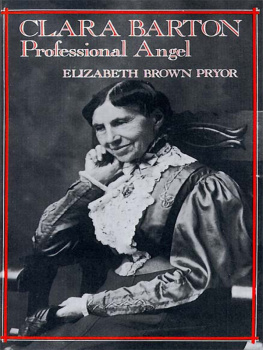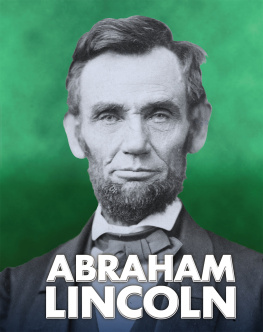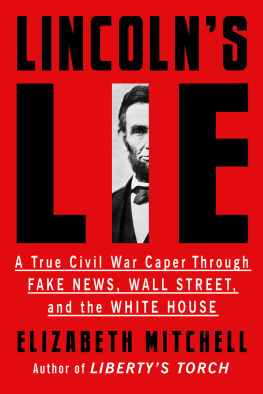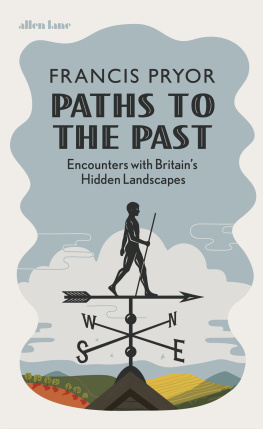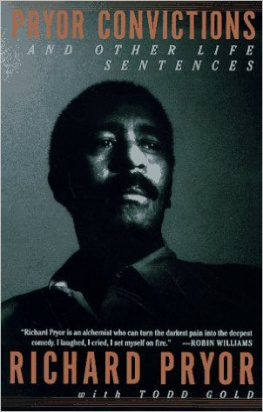Elizabeth Brown Pryor - Six Encounters with Lincoln
Here you can read online Elizabeth Brown Pryor - Six Encounters with Lincoln full text of the book (entire story) in english for free. Download pdf and epub, get meaning, cover and reviews about this ebook. year: 2017, publisher: Penguin Publishing Group, genre: Non-fiction. Description of the work, (preface) as well as reviews are available. Best literature library LitArk.com created for fans of good reading and offers a wide selection of genres:
Romance novel
Science fiction
Adventure
Detective
Science
History
Home and family
Prose
Art
Politics
Computer
Non-fiction
Religion
Business
Children
Humor
Choose a favorite category and find really read worthwhile books. Enjoy immersion in the world of imagination, feel the emotions of the characters or learn something new for yourself, make an fascinating discovery.
- Book:Six Encounters with Lincoln
- Author:
- Publisher:Penguin Publishing Group
- Genre:
- Year:2017
- Rating:5 / 5
- Favourites:Add to favourites
- Your mark:
- 100
- 1
- 2
- 3
- 4
- 5
Six Encounters with Lincoln: summary, description and annotation
We offer to read an annotation, description, summary or preface (depends on what the author of the book "Six Encounters with Lincoln" wrote himself). If you haven't found the necessary information about the book — write in the comments, we will try to find it.
Six Encounters with Lincoln — read online for free the complete book (whole text) full work
Below is the text of the book, divided by pages. System saving the place of the last page read, allows you to conveniently read the book "Six Encounters with Lincoln" online for free, without having to search again every time where you left off. Put a bookmark, and you can go to the page where you finished reading at any time.
Font size:
Interval:
Bookmark:

Reading the Man: A Portrait of Robert E. Lee Through His Private Letters
Clara Barton, Professional Angel

VIKING
An imprint of Penguin Random House LLC
375 Hudson Street
New York, New York 10014
penguin.com
Copyright 2017 by Elizabeth Brown Pryor
Penguin supports copyright. Copyright fuels creativity, encourages diverse voices, promotes free speech, and creates a vibrant culture. Thank you for buying an authorized edition of this book and for complying with copyright laws by not reproducing, scanning, or distributing any part of it in any form without permission. You are supporting writers and allowing Penguin to continue to publish books for every reader.
Library of Congress Cataloging-in-Publication Data
Names: Pryor, Elizabeth Brown, author.
Title: Six encounters with Lincoln : a president confronts democracy and its
demons / Elizabeth Brown Pryor.
Description: New York, New York : Viking, 2017. | Includes bibliographical
references and index.
Identifiers: LCCN 2016042837 (print) | LCCN 2017001615 (ebook) | ISBN
9780670025909 (hardcover) | ISBN 9780735222793 (e-book) | ISBN
9780735222793 (ebook)
Subjects: LCSH: Lincoln, Abraham, 18091865Anecdotes. | PresidentsUnited
StatesAnecdotes. | Lincoln, Abraham, 18091865Miscellanea. |
PresidentsUnited StatesMiscellanea.
Classification: LCC E457.15 .P93 2017 (print) | LCC E457.15 (ebook) | DDC
973.7092dc23
LC record available at https://lccn.loc.gov/2016042837
Version_2


M y sister Elizabeth Brown Pryor tragically lost her life on April 13, 2015. A manic-depressive driver, who thought that he could fly his car, was trying to taxi down a quiet city street in Richmond, Virginia, when he rear-ended her beloved Audi TT at 107 miles per hour. She was instantly killed. She left behind two completed manuscripts: one for this book and another for an article, The Grand Old Duke of York: How Abraham Lincoln Lost the Confidence of His Military Command, which will be published separately.
I remember her sheer elation the previous January, when she called me in London to announce that she had finally finished Six Encounters with Lincoln. It had been a long, slow gestation that had begun with a chance discovery in 2008. The day that she received the Lincoln Prize for Reading the Man: A Portrait of Robert E. Lee Through His Private Letters, she had spent the morning doing research at the New-York Historical Society. When she arrived back at the flat where we were staying to change for dinner (into my new Armani jacket), she was ecstatic. Not in anticipation of receiving such a singular honoralthough she was, of course, delighted to receive itbut because she had just discovered an unpublished drawing of Abraham Lincoln sketched in a letter written home during the Civil War. As she put it, There sits Abraham Lincoln, with a familiarity almost unimaginable today, legs folded and tall hat in place, looking for all the world like a cricket perched on the nations front porch.
What had been a brief encounter in 1862 between the President and one of his military guards turned out to be not only a fascinating tale, but a springboard for investigating a neglected but significant aspect of Lincolns administration. Over the next seven years Elizabeth submerged herself in the letters, diaries, and newspaper articles of the 1860s, carefully piecing together six episodes that explored Lincolns difficulty in managing a republic. Her own quarter-century career in the State Department gave her a unique perspective on how slowly the wheels of government turn and how our Founding Fathers insistence on a balance of power could cause the cogs of those wheels to lock in an unwelcome impasse. Few other Civil War historians can marry personal experience with scholarly insight in such a compelling way. She served as the foreign affairs adviser to both houses of Congress and so had an insiders view of the government at work. When we read her criticism of Lincoln as commander in chief, we should remember that she was once the chief U.S. spokesperson for NATO and had earlier been deeply involved with Bosnia, serving in Sarajevo at the time of the siege. She experienced firsthand the importance of military discipline when one was under fire, and she understood that rank matters. As she was fond of saying, she had lived real-time history. It was her unique ability to tie the various threads of her life experience together and reflect upon the lessons she had learned that allowed her to render such a vivid picture of nineteenth-century American history. As one critic put it, The sheer power of [her] language is as inspiring as a great painting.
When I found the manuscript of Six Encounters with Lincoln after her death, the text, footnotes, and bibliography were virtually ready for publication. She had meticulously highlighted in yellow any quotations or page numbers that needed to be rechecked. Only the preface was missing. I undertook the task of checking the notes, quotations, and bibliography, but what appears in the following pages is completely her work in her words. She had ordered four or five photographs, but left no list of illustrations. I knew only that she had once told me that she wanted a lot of pictures. Luckily, since I am an art historian, ordering photographs is one thing I know how to do and my major contribution to this book was deciding what should be illustrated and where it should be placed within the text.
Elizabeth and I and our sister, Peggy, grew up listening to my mothers tales of the Civil War with rapt attention. Not that Mother herself had been around then, but as a child she had spent hours sitting on the front porch in Terre Haute, Indiana, listening to the tales of her great-grandfather John Jackson Kenley. Grandpa Kenley, who according to family lore had lived to the ripe old age of 104 (his military records, however, show him to have been 96 at his death in 1938), had been a foot soldier in the Twenty-Fourth Indiana Regiment. He saw action at the battles of Shiloh, Corinth, Vicksburg, and Mobile as well as the occupation of New Orleans. The house was full of Civil War heirlooms, including the walnut bookcase made for his wedding in 1863, the fork from his mess kit, and a pile of letters, one of which Elizabeth quotes in this book. Yet as she often said, it was not the stuff that got her hooked on the Civil War, but Mothers storytelling ability. History after all means story and Mother was able to make it seem very real to the three of us. Mother died just four months after Elizabeth, but for seven years she had been able to follow the progress of the book from beginning to end, listening to the chapters as they were written. She was inordinately proud that her middle daughter was just as good a storyteller as she was.
On a road trip, Elizabeth retraced the Lincoln familys journey from Virginia to Kentucky to southern Indiana; the same trip that the Kenley family had made in the early years of the nineteenth century. I remember her excitement at finding the gravesite of Grandpa Kenleys mother, who had died as the family passed through the bluegrass country of Kentucky. In her eyes Lincolns history and our history were to some extent inextricably bound. Her trip to what she inevitably referred to as the dreaded CTZ, that is to you and me the Central Time Zone, was tainted only by the lack of three-star Michelin restaurants. For two months she was forced to subsist on a diet of monkey chow, which in her parlance meant Subway sandwiches, chocolate-covered cranberries, and Diet Dr Pepper. The upside, however, was that she saw firsthand the furniture made by Lincolns father and found new insights into the Rail-splitter's boyhood.
Font size:
Interval:
Bookmark:
Similar books «Six Encounters with Lincoln»
Look at similar books to Six Encounters with Lincoln. We have selected literature similar in name and meaning in the hope of providing readers with more options to find new, interesting, not yet read works.
Discussion, reviews of the book Six Encounters with Lincoln and just readers' own opinions. Leave your comments, write what you think about the work, its meaning or the main characters. Specify what exactly you liked and what you didn't like, and why you think so.



